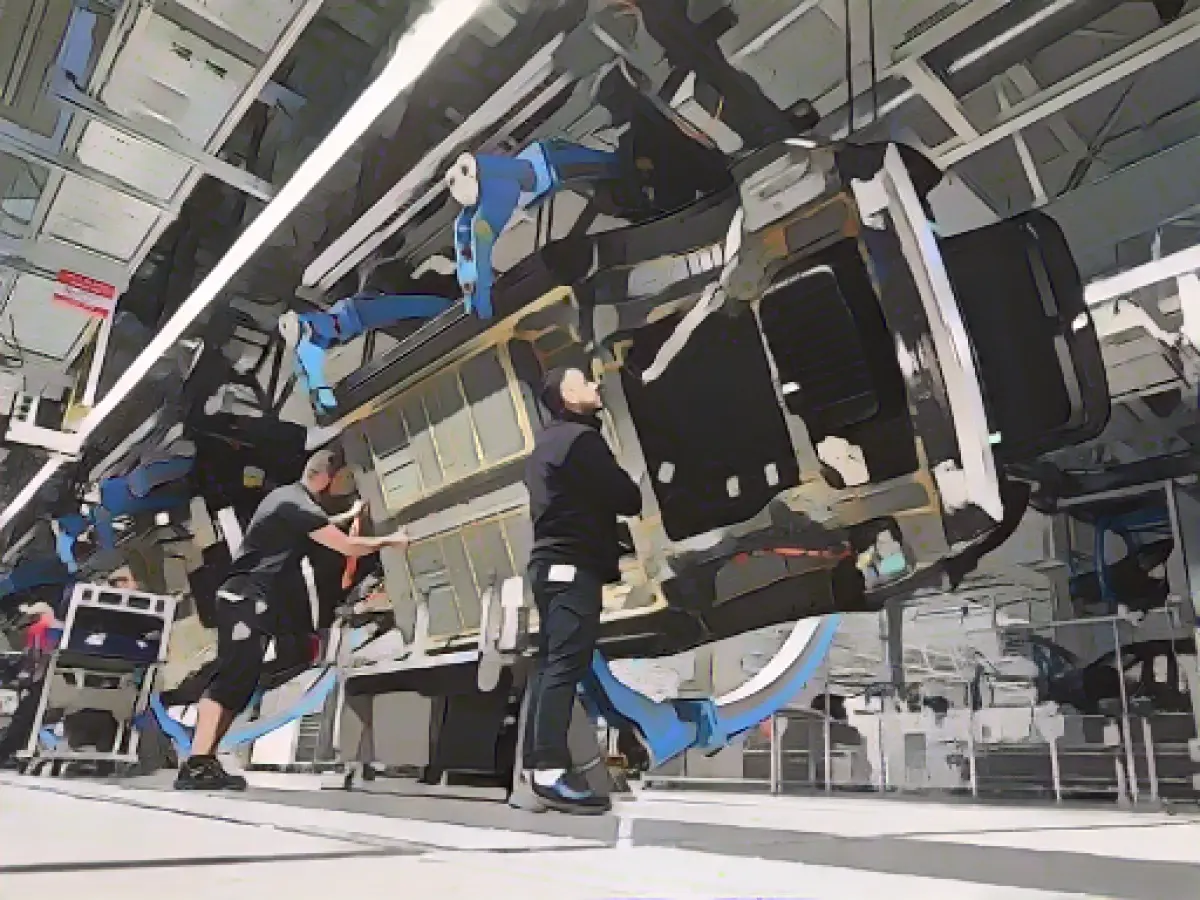Car sales and profits surge for top automakers
The world's leading carmakers have seen a significant increase in revenue and profits. In the third quarter of the year, sales for the 16 major car manufacturers skyrocketed by 11% to an impressive 504 billion euros compared to the same period last year, while earnings before interest and taxes (EBIT) also increased by 35% to 39 billion euros, according to an analysis by Ernst & Young (EY). Currency effects in Japan, where the weak yen gave Japanese car manufacturers a massive 103% increase in profits, were a major factor in this shift.
Mercedes-Benz leads in profitability
Profitability, measured by the EBIT margin, saw a slight uptick from 7.2% to 8.6%. Mercedes-Benz emerged as the most profitable car manufacturer with an impressive margin of 13%, followed closely by Toyota with 12.6% and BMW at 11.3%. Volkswagen brought up the rear with a margin of 6.2%.
However, Constantin Gall, an automotive expert and head of EY's Western Europe mobility division, warned that the car industry was not out of the woods yet: "The coming year will be significantly more challenging." Demand for new cars is waning, the rollout of electromobility is faltering, and price pressure is mounting. Issues with the launch of new models are affecting profitability due to fewer sales and higher-than-expected development costs.
Discounts, special offers, and cost-cutting measures become essential
In response, more and more manufacturers are offering discounts, attractive financing options, and special models to maintain sales. However, these measures can be detrimental to profit margins. Gall stated that many companies are cutting costs and streamlining processes to ensure competitiveness, as excessive internal bureaucracy and complex procedures can be costly.
The conversion to electromobility will be a major test
Electromobility is a significant challenge for the industry. While there is a vast selection of new electric vehicles on the market, customers have proven to be more cautious than expected. The switch to electric mobility will be a crucial test for the industry, said the EY expert, as customers either warm to the idea or remain skeptical.
Consumers continue purchasing cars, driving up sales and profits
Despite challenges in the auto industry, consumers remain interested in buying cars. Discounts, special offers, and new models are popular strategies to drive sales. In this climate of cost-cutting and transformation, companies must balance their traditional combustion engine businesses with investments in electric vehicles to achieve profitability.
Insights
The ongoing shift to electromobility presents an array of challenges and opportunities for the global car industry. Key challenges include:
- Weakening demand in certain European and U.S. markets, leading to excess inventory and inventory issues,
- Intense competition from Chinese OEMs, exacerbated by price wars in China,
- Tariffs and trade issues that could impact global geopolitical risks and the European Union's EV market development,
- Profitability concerns in the EV market, with only a few automakers like Tesla and BYD achieving profitability with electric vehicles,
- Cost efficiency dilemmas, particularly related to warranty costs and higher material costs and incentive spending.
To navigate these challenges, automakers should consider employing strategic adjustments, technological innovation, and operational efficiency measures, such as:
- Embracing agility and technology by transitioning to software-defined vehicles and leveraging AI in improving safety, customer satisfaction, and development cycles,
- Pursuing cost savings and resource planning through optimized production and efficient resource management,
- Collaborating with partners, including OEMs, suppliers, and tech companies, in accelerating innovation and scaling solutions,
- Investing in employee upskilling to meet the demands of digital transformation,
- Adopting flexible or multi-energy platforms to adapt production for optimal sales growth and profitability,
- Prioritizing cost reduction efforts among suppliers, restructuring for lower capacities, and focusing on margins and free-cash-flow instead of growth,
- Streamlining operations to secure a competitive financial footing,
- Managing inventory efficiently to maintain sales at lower margins while absorbing higher costs.






